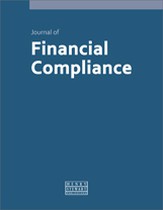Reviving securitisation in the EU: A critical analysis of the reporting requirements
Abstract
The EU Securitisation Regulation (SECR) came into force in 2018, applying to securitisations issued after 1st January, 2019 and to eligible legacy securitisations. This is a cornerstone of the Capitals Market Union (CMU), which, together with the amendment of the Capital Requirements Regulation (CRR), aims at reviving the European securitisation market. By introducing a robust and harmonised framework, the regulator intends to resolve the following conundrum: how to relaunch the securitisation market, which is essential for financing the economy, while mitigating its vulnerabilities and the stigma associated with it? More specifically, the CRR amendment contains the calibration of capital requirements in accordance with the updated hierarchy of methods while the SECR defines the criteria for securitisations to qualify as ‘simple, transparent and standardised’ (STS). The SECR also sets common rules for the due diligence obligations of institutional investors, regardless of the sector to which they belong. An intrinsic (although not specific) problem with securitisation is the question of asymmetry of information, since investors have access to less information about the loans backing the tranches than lenders involved in their origination. Article 7 of the SECR addresses this issue by defining high standards to transparency requirements using a very granular reporting method. While market participants recognise the necessity of fostering transparency and due diligence to increase confidence in the market, the current reporting framework, because of the burden it represents, may discourage potential investors and originators. This paper provides a thorough overview of the reporting obligations set on credit institutions in the context of securitisation. It demonstrates how the lack of integration and proportionality combined with technical limitations perpetuates regulatory fragmentation and associated high costs. It proposes potential solutions to integrate requirements from various sources into a unified model and concludes with the necessity to improve the governance of reporting and data requirements at a European level.
The full article is available to subscribers to the journal.
Author's Biography
Olivia Hauet is Principal Economist in the Directorate General Statistics of the European Central Bank. She has previously held positions in the financial sector, both public and private: adviser at the Swedish Riksbank, business owner for Regulatory Reporting at Nordea, front-to-back solution expert for clients both within the government sector (Bank of Thailand, Banque de France, Banque Al-Maghrib, Bank of Russia) and outside (commercial banks, pension funds, corporate treasuries). Olivia Hauet is a graduate of ESSEC (MBA) in France.
